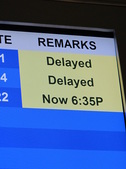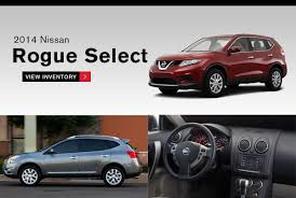 = image © by Brian E. Faulkner -
= image © by Brian E. Faulkner - Back in the mid ‘50s, a decade after Rosie the Riveter had retreated back to the home, women were stereotyped as Susie Homemaker. If the advertising image was to be believed, women did the household chores – including the greatest bulk of child care – while dad did the paying work and his wife dutifully waited for him to come home, in her A-line skirt, peasant blouse and red lipstick.
My maternal grandmother, who was in her 60s back then, was employed as a department store manager and, most assuredly, did not wear A-line skirts. She was a working woman and far removed from the sweet, stereotypical granny who smothers her grandchildren with kisses; truth is, she was a tough old Yankee bird very much set in her ways. This made for tense relations with my Irish-tempered mother, who lived with us in her mother’s house. But Mom was great. She stuck up for us whenever it was needed (with Grandma, sometimes to Dad and occasionally to the neighbors) but also nailed us firmly to the door of truth when that was required. Of course, that meant we couldn’t get away with much, whether within her eyesight or not. There was another side to that coin, however: Mom was always there to tend both our physical and emotional wounds. She was an RN before children came along and didn’t go back to it until we all flew the nest, sometime in the ‘70s.
Now lest you think this Father’s Day reflection is solely about the women of my family, Dad played a looming part in our lives. He was smart and resourceful – but also demanding – and would tackle just about any kind of chore with vigor, from yard work to repairing the car and rebuilding our decrepit old washing machine several times over. Which made him totally unlike TV’s inept husband.
We kids (four brothers spread over ten years) were expected to follow his lead and do some of everything, and it wouldn’t have made any difference had some of us been sisters. We mowed and clipped the lawn, put out the trash, raked leaves, shoveled snow, weeded the garden and hauled heavy wooden storm windows up two flights of stair to the attic in the spring and back down again in the fall. We also did the suppertime dishes and couldn’t leave the house until the task was complete. We dusted furniture, helped with spring cleaning, ran the jet-shaped vacuum cleaner (hateful thing), cleaned our rooms on weekends and made our beds every morning. We were expected to chip in – without whining. Dad managed the outside chores, Mom the inside ones. That’s just how it was in the ‘50s and ‘60s.
My own kids (three daughters, one son) did some work around the house, but not as much demand was put on them as my folks put on me. Even so, they have grown into successful (even admirable) adults. Each is diligent and hard-working and appears to have little brook with gender stereotyping, which really is just another form of intellectual dishonesty .
I doubt that my grandmother ever thought for a moment that she couldn’t do whatever it was she had in mind. Women of her era worked as teachers, in retail, entertainment, medicine and other professional fields, and it may be that since society didn’t expect much of them outside the home in those days, they expected that much more of themselves. It just took a while for the times to catch up to the reality (and plain common sense) of considering women as equals in the workplace, although I think their acceptance got retarded to some extent by shrill Feminist voices. And clearly, the stereotype that a woman’s place is only in the home has yet to vanish entirely.
It also helped that a second income eventually became critical to family financial success and women began thinking of themselves less as cookie-cutter people and more as individuals, including homemakers. But then, I think sometime in the ‘80s, TV advertising began depicting men in stereotypical ways just as they had women twenty and thirty years earlier. To progressive-thinking ad copywriters (men and women), it must have seemed as if justice finally was being served -- and it was up to them to serve it! The result, therefore, was occasional slice-of-life advertising that presented a softer, more sensitive male persona. And sometimes an incompetent one.
When I think of the stereotypical Dumb Husband, I recall a one-time neighbor of ours who pleaded ignorance about anything that remotely resembled a chore; mowing, raking, shoveling, checking the oil on the car, repairing small appliances or fixing that light switch -- all were anathema to him. His wife did most everything, and rather well, while he bragged to us about how good he was at business (and basketball). He was an exception who just happened to match an emerging male stereotype.
As brands now seek to engage their diverse customers more authentically, it’s good to see most of the old stereotypes going by the boards – at least in television ads.
"As we think about bringing new users to (our products), the way you think about our communication and their behavior is a bit different,” said Jennifer Brown, director of marketing for Unilever (Dove, Hellman’s, Lipton, etc.), quoted in the CNBC.com article. We're sort of adjusting how we reach clients because of that."
And that’s not limited to gender stereotypes. The current task of creative copywriters appears dedicated to bringing racial balance to advertising. As a result, there are more black and brown faces in TV spots (and programming) than ever. In fact, there now seem to be a greater abundance of these faces than otherwise might have been the case had the advertising industry not fallen so thoroughly into racial stereotyping in its early days and had to make up for lost ground. Bringing racial balance to advertising is long overdue, from a societal and business sense as well as an expression of intellectual honesty. To do otherwise is both short-sighted and stupid – as long as marketers don’t overcorrect and create frustrating new stereotypes.
Like the Dumb Husband.
TakeAway: Advertise your products and service to real people, because it’s real people who buy them, not some thoughtless stereotype.
Content © by Brian E. Faulkner





 RSS Feed
RSS Feed